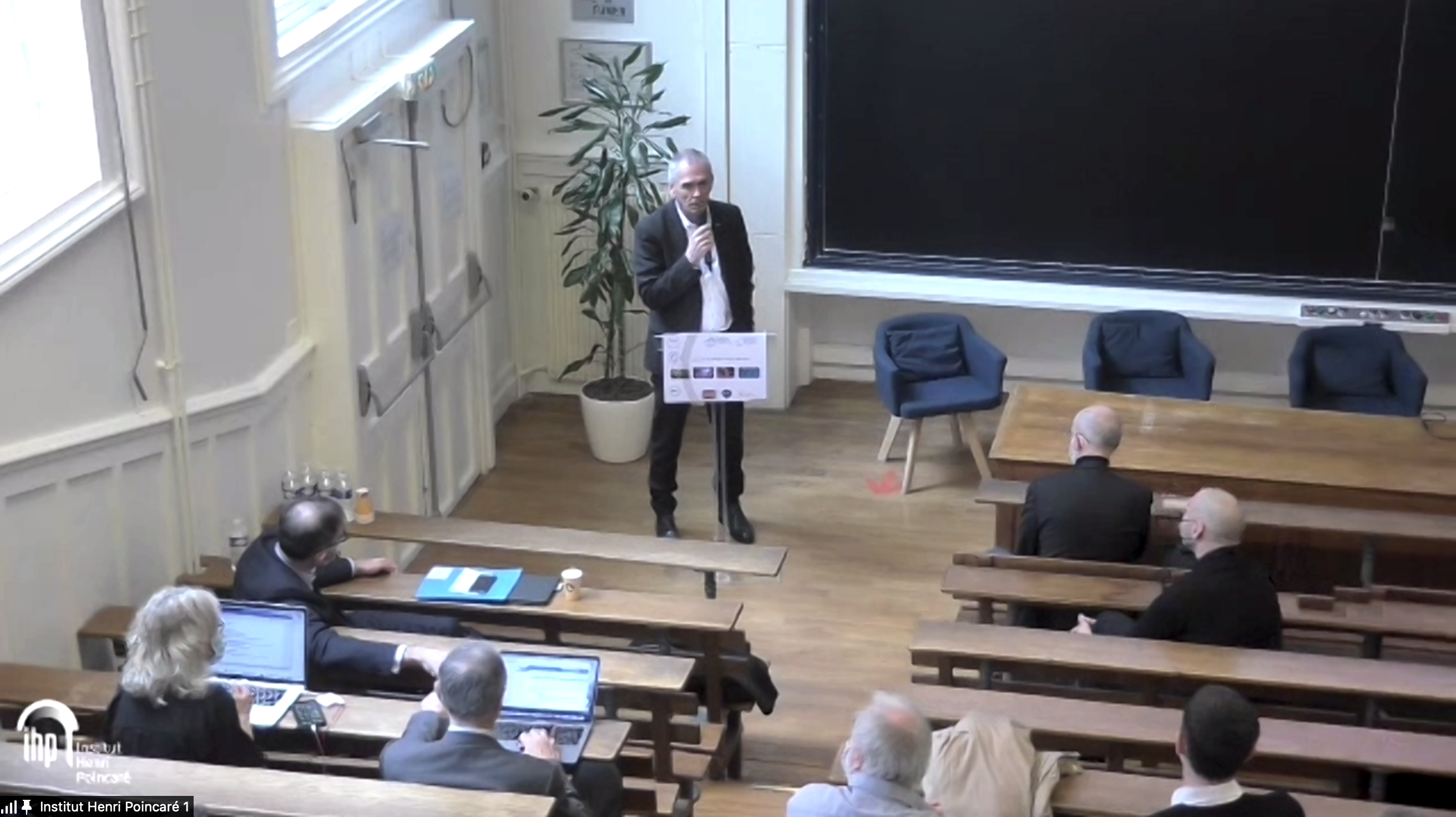
The French Quantum national R&D strategy just started
Ten selected projects were announced during the launch of the €150M Quantum Priority Research and Equipment Programme (PEPR) in March. Sébastien Tanzilli, co-leader for the CNRS, details its ambitions.
France’s Quantum PEPR has just been launched. What issues are involved, and what are its ambitions?
Sébastien Tanzilli1 : The "Quantum" Priority Research and Equipment Programme represents the upstream part of the national acceleration strategy for quantum technology, which was announced in January 2021. PEPRs, which were identified by the government as part of the France 2030 recovery plan, must address the economic, societal, digital, and environmental challenges of the present and future with actions in favour of industry, research, and academic training. The Quantum PEPR is an "acceleration" programme, aiming at supporting research activity ranging from basic science to proofs of concept (TRL2 1 to 4).
The Quantum PEPR, which has a sizeable budget of 150 M€ over 5 years, is co-driven by the CNRS, the French Alternative Energies and Atomic Energy Commission (CEA), and the French National Institute for Research in Digital Science and Technology (INRIA)—with which the CNRS is also leading the Cybersecurity PEPR and other exploratory PEPRs. The government is strongly engaged with developing quantum technologies for reasons of national and European sovereignty. The objective is to be at the highest level of international scientific and industrial competition, and provide France and Europe key solutions to ensure their independence in this key area.

On 4 March, you announced 10 priority projects for the PEPR. What are they?
S. T. : The government entrusted leadership of the Quantum PEPR to the three national research organizations capable of conducting an effective scientific and technological strategy, which involves making choices. Following broad consultation with the community initiated in 2019 by Parliament Member Paula Forteza, four major areas of research were established by the government3 : robust solid-state qubits4 for quantum computing; cold-atom qubits for quantum computing and sensors; quantum algorithms; and quantum communication including the frontier of calculability. The PEPR consists of two complementary financing components, one emphasizing projects that will effectively and quickly implement the desired acceleration, and another relaying the needs of the community via calls for proposals connected to ground-breaking concepts.
The programme's managers identified consortiums to complete the 10 projects, for which contracts are being completed by the French National Research Agency (ANR). They involve various areas, with their complementarity ensuring the programme's remarkable overall coherence: error correction codes, cold-atom, superconducting and silicon-spin qubits, gravimeter-type sensors, and quantum communication with the ambition of deploying operational networks (see textbox).
The PEPR also funds two equipments of excellence (Equipex+): aQCess, led by Université de Strasbourg, which proposes a cold-atom quantum computing platform as a service; and e-DIAMANT, led by École normale supérieure Paris-Saclay, which is closely connected to industry, and aims to become a leading diamond supplier by developing the entire chain from material to device.
Will other teams and consortiums receive support?
S. T. : Yes, of course. That is the goal of the calls for proposals, which will be launched by the PEPR. A first call was already launched with the ANR on the topic of "quantum computing on the fly." The goal is to specifically fund projects connected to photonics and electronics, which are complementary paths to projects based on solid-state qubits or cold-atom qubits. Other more generic calls for proposals relating to ground-breaking concepts and talent will be opened during the spring.
- 1Sébastien Tanzilli is a CNRS Senior Researcher at the Nice Institute of Physics (CNRS/Université Côte d'Azur), and the deputy scientific director for quantum physics and technology at the CNRS Institute of Physics. He is leading the Quantum PEPR for the CNRS.
- 2Technology Readiness Levels, which measure the technological maturity of a system on a scale from 1 (basic principles observed and reported) to 9 (actual application of the technology in its final form and operational environment).
- 3More specifically, by the General Secretariat for Investment (SGPI), a French administration under the Prime Minister's authority.
- 4Like a classical bit, whose two states are exclusively 0 or 1, the quantum bit or qubit is the basic unit of quantum information. Unlike a classical bit, a qubit exploits superposition of states to "simultaneously" code both states of 0 and 1.
Quantum PEPR: 10 selected projects
Ten major projects relating to the Quantum PEPR's four areas of research have been identified. With a duration of 5-6 years, these projects will be led by teams of internationally recognized scientists, with goals that significantly surpass the current state of the art.
In the field of robust solid-state qubits for quantum computing, two projects were selected for their potential to develop large-scale quantum computers. With access to a world-class technological platform, the objective of the PRESQUILE project is to help identify and overcome the scientific and technological obstacles to integrating spin qubits within well-established CMOS technology5. The RobustSuperQ project aims to accelerate French R&D relating to superconducting and hybrid qubits protected against decoherence, a phenomenon that makes qubits unreadable and creates random errors. In 5 years, the project should demonstrate a high-fidelity quantum processor that is controllable and measurable, which does not yet exist on any platform (optical, atomic, or solid-state).
In the field of cold-atom qubits for quantum computing and sensors, the goal of the QubitAF project is to improve cold-atom platforms for quantum simulation by increasing the number of manipulated atoms, certifying results, and detailing the performance of these platforms. The QAFCA project seeks to develop compact and transportable cold-atom sensors to measure gravitational fields, with applications in climate change analysis and the anticipation of natural disasters, and even in civil engineering and CO2 storage.
In the field of error code correctors, quantum algorithms, and post-quantum cryptography, the NISQ2LSQ project will study in-depth the different correction strategies for random errors through the quantum aspect of qubits. Correction codes will be tested in experiments on superconducting and photonic platforms. The EpiQ project will study all of the logical building blocks needed for a quantum processor to function properly (compilation, manipulation, optimization, intermediary languages, certification, etc.), by identifying constraints and better simulating actual machines, in an effort to develop new algorithms that can surpass today's capacities in fields such as machine learning, optimization, and chemistry. The PQ-TLS project develops new cipher and signing patterns based on a multitude of approaches, in order to take cryptography into the postquantum era, in other words to make protocols resistant to attacks from quantum computers.
In the field of quantum communication, the DIQKD project focuses on "black box" quantum key distribution—a solution that is promising but demanding in terms of experimental and theoretical development—which can provide communications security even when the devices used are only partially known. The QMemo project seeks to optimize the performance of quantum memories, a crucial element in deploying quantum networks over long distances, by connecting the sub-segments that divide the overall distance, like quantum repeaters. Finally, the objective of the QCommTestbed project is to provide France with a nationally coordinated quantum test platform, which will be used for the demonstration of quantum communication applications via a gradual TRL progression from laboratory systems to commercial products.


